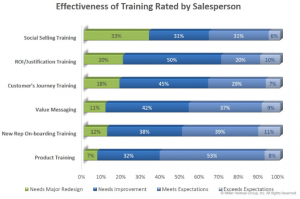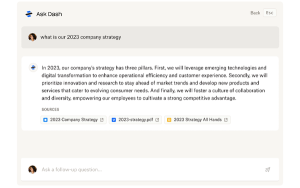
There are many financial statements used by businesses but the three most common are Balance Sheets, Income Statements and Cash Flow Statements. What makes them the most common is that they are often produced by a company’s accounting software and look at what happened in the past. I refer to them as reports. However, there are several other financial documents that are not reports, but projections, and are most often created using a spreadsheet such as Excel.
Since the vast majority of the clients I mentor are just starting up a new business or do not require a detailed discussion of financial statements, I often gloss over discussions about financial statements until they are established. The biggest problem of having a discussion about financial statements with a first-time entrepreneur is that there are many different reports and the business finance terms can be confusing to someone without an accounting degree.
Moreover, the discussion of financial statements often comes up when they are trying to write a business plan for the first time. Financial statements are a combination of reports produced by a company’s accounting software and spreadsheet projections to present the financial activities of a business. When the business is pre-start, there has not been any financial activity to report, so none of the key financial statements are available to the founder. The founder is forced to use spreadsheets to make projections.
A business plan consists primarily of three sub-plans- an Operations Plan, a Marketing Plan, and a Financial Plan. The financial plan is often where you will find the business’s financial statements, although many are found in an appendix with an existing business. The financial statements included in a business plan will vary, depending on if the business is pre-start or an existing business. This single fact causes a lot of confusion for the first-time entrepreneur writing a business plan and is responsible for many founders to stop short of completing their business plan.
Financial Statements and Business Plans
As stated earlier, a business plan for a pre-start business and an existing business are very different when it comes to its financials.
Pre-Start Business Plans
Capital-intensive businesses, such as a manufacturing business or a business that need lots of research and development before they have a final product such as a technology startup, often need a business plan to raise risk capital. When this is the case, I recommend including three spreadsheets in the business plan as part of the financial plan.
- Startup Worksheet
- Proforma Cash Flow
- Break-Even Analysis
In the case of a pre-start business, these three spreadsheets that the founder has to produce as part of their initial business planning are projections the founder has to make about the future operations of the business.
You will note that there is no reference to the three common financial statements (balance sheet, income statement, and cash flow statement).
Many first-time entrepreneurs are encouraged to write a business plan before they launch a new business. Too often, these entrepreneurs read books or take courses about how to write a business plan, which includes both reports that are produced by a business’s accounting software, and projection documents that the founder must produce using a spreadsheet.
This problem is compounded by the fact that writers of business planning books and courses generally assume that the person writing the business plan has an existing business. With an existing business, many financial statements are simply printed out and included in the appendix of the business plan. However, for a business with no history, there is no data from which to produce these financial statements. As such, by far the biggest stumbling block to preparing a business plan for first-time entrepreneurs is related to their financial plan and not understanding how they can to produce the three key financial statements that are produced by accounting software which they do not yet have.
Just to be clear, if you are pre-start you can’t produce many of the financial statements that are often referenced in books and courses that describe business planning because they fail to separate the kinds of financial information that goes into a business plan for a pre-start vs an existing business.
Business Plan for Existing Business
For an existing business, the financial information included in the financial plan and/or the appendix are substantially different from those included for a pre-start business. Specifically, an existing business no longer needs to include a startup worksheet. Instead, they require many more financial statements to provide lenders and investors a clearer picture of the business’s current and past financial health, and the future prospects of the business. The three key financial statements are then used to calculate various financial ratios. The following are the kinds of financial statements that are often included in the business plan for existing businesses.
- Current Balance Sheet
- Past Years Income Statements
- Current Cash Flow Statement
- Projected Balance Sheets
- Projected Income Statements
- Projected Cash Flow Statements
- Break-Even Analysis
Of all the elements listed above, the balance sheet, income statements, and cash flow statements are financial reports that are produced by your accounting software and are based on what happened in the past. The remaining statements are projections that the business anticipates will occur.
Now that I have hopefully cleared up any confusion about financial statements as they relate to business planning, let’s examine each of the three key financial statements, what I call financial reports for clarity, in more detail.
Balance Sheet
When your business plan is being written for an existing business, either the financial plan section or the appendix should include a current balance sheet produced from your accounting software, such as QuickBooks.
A balance sheet is a snapshot in time and consists of three main sections
- Assets
- Liabilities
- Equity
Balance Sheet Assets
Assets are identifiable value that the business owns. This includes not only its cash, but anything that could be converted into cash such as property, equipment, investments, or intellectual property.
Assets can further be broken up into two categories:
- Current Assets are anything that businesses could convert into cash within one year such as cash or inventory.
- Fixed Assets are assets purchased for long-term use such as land, buildings, and equipment.
Balance Sheet Liabilities
Liabilities represent money that the business owes others. Liabilities include any remaining principle on debt such as loans or mortgages, as well as other payables such as invoice payments that are still owed to vendors or employees.
Liabilities can further be broken up into two categories:
- Current Liabilities are debts such as payables that the business must satisfy within one year from the balance sheet run date.
- Long Term Liabilities are debts that are not due within one year of the date of the balance sheet, such as loans and mortgages.
Balance Sheet Equity
When you subtract the liabilities from the assets, you get what is known as Equity. Equity is what lenders and investors are most interested in since it represents the return to the company’s shareholders if all assets were turned into cash and all debt was paid off.
NOTE: Since a balance sheet in a business plan is required only for existing businesses with history, it is recommended that you export the balance sheet from your accounting software. As said earlier, if this is a new venture, then a balance sheet is not included.
Income Statement
When your business plan is being written for an existing business, either the financial plan section or the appendix should include an income statement produced from your accounting software such as QuickBooks or FreshBooks. Income statements are also called a Profit and Loss Statement, or P&L for short.
An income statement represents a period of time and has three main sections:
- Revenue
- Expenses
- Profit
Income Statement Revenue
Revenue is the amount of money coming into a business. On some Income statements, this may be listed as Income.
In accounting, we often have a line item called Cost Of Goods Sold (COGS). Sometimes it is listed in the Revenue section and is subtracted from Sales to produce Gross Profit. Sometimes COGS are treated as a fourth section, while other times, COGS is simply listed in the expenses section. When we subtract COGS from revenue, we get either Gross Profit or Gross Margin. To prevent vocabulary from being an issue, I simply refer to all money coming into the business as Goes-in-a’s during presentations.
Income Statement Expenses
Expenses are all the money leaving the business to pay for things it uses for a very specific period of time. That time period is generally a year when it comes to inclusion in a business plan. However, the income statement can represent any time period. For operations, owners often receive monthly income statements from their accountants. To prevent vocabulary from being an issue I simply refer to all money going out as Goes-out-a’s during presentations.
Income Statement Profit
If you subtract expenses (goes-out-a’s) from revenue (goes-in-a’s), you are left with what is known in finance as Profit.
To be clear, an income statement is a tax document and profit is what a business is required to pay federal and state income taxes on. A business plan for an existing business will typically contain an income statement for two years prior, as well as the current partial year’s income statement.
NOTE: Since an income statement only applies to existing businesses, you will simply need to export them from your accounting software. As implied earlier, if this is a new venture, an income statement is often not included.
Cash Flow Statement
Not to be confused with a proforma cash flow spreadsheet, produced by the founder and used in a pre-start business to project anticipated revenue, a cash flow statement is a report produced by your accounting software. A cash flow statement shows how much money has moved in and out of a business.
A cash flow statement represents a specific period of time, such as a year or month, and has three main sections:
- Operations Cash Flows
- Invested Cash Flows
- Financial Cash Flows
The results of adding all three sections together is Net Cash Flow
Operations Cash Flows
Operations cash flow shows how much cash was spent or earned from running the business. Examples include revenue, expenses, and taxes.
Invested Cash Flows
Invested cash flow shows how much a business sold or spent on property, plant, and equipment. Examples include selling old equipment or purchasing a new building.
Financial Cash Flows
Financial cash flow shows the amount of money a business received in loans or paid in dividends to shareholders.
NOTE: Since a cash flow statement only applies to existing businesses, you will simply need to export them from your accounting software. As implied earlier, if this is a new venture, a cash flow statements is often not included.
Financial Statement Conclusion
In conclusion, the financial information provided for a pre-start business plan is different from the information provided for an existing business. There are reports that are produced by a company’s accounting software and spreadsheets produced by the founder or executives. Reports show things that have already happened, whereas spreadsheets predict what will happen in the future.
There are three key financial statement reports:
- Balance Sheet– A financial report that shows how much a business owns and owes others in a specific moment.
- Income Statement– A financial report that shows how much a business’s operations earned and spent during a specified period.
- Cash Flow Statement – A report that shows how much money has moved in and out of a business during a specific period.
How can you use the three key financial statements to asses the health of your business?
Business & Finance Articles on Business 2 Community
(41)








